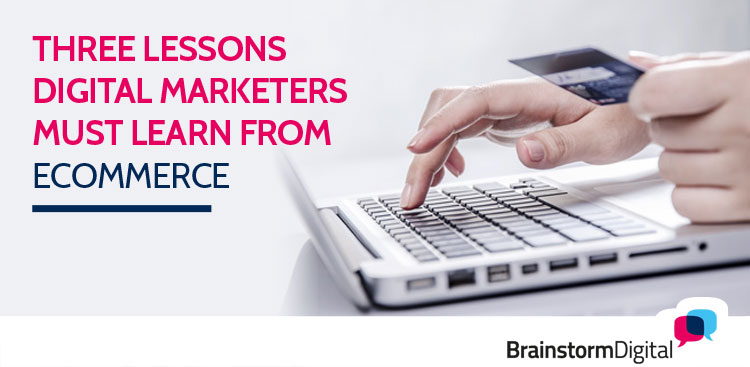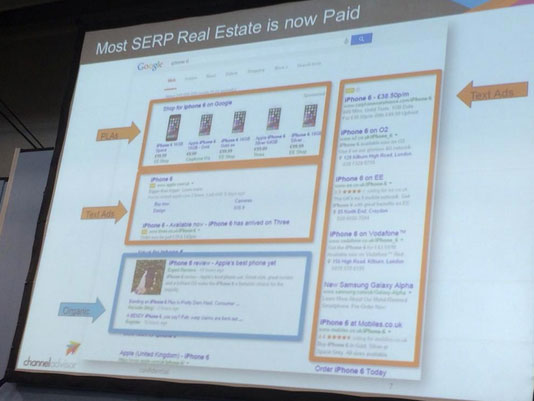
What are the latest trends in eCommerce – and how are they relevant to digital marketers of all stripes?
To find out, I spend the day at the eCommerce Expo 2014, taking place in London in early October. It’s the go-to show for anyone in online retailing or digital marketing who wants to raise revenue, increase profits and gain the edge on their competitors.
Whether presenters were talking about customer service, payment handling, SEO, or anything else, again and again, three themes stood out loud and clear:
1. Nobody is interested in what brands have to say
It’s a regularly publicised stat: only 14% of people trust ads, whereas 90% trust peer recommendations.
 But if you wanted to see the proof in the pudding, you merely had to count the number of online customer review companies present at the show – that is, companies that sell technology that allows members of the public to rate and evaluate the products they’ve bought. At times it seemed they were present on every other stand: www.Reputation.com, www.reviews.co.uk, www.trustpilot.com, www.trustedshops.co.uk and www.verified-reviews.com to name but a few.
But if you wanted to see the proof in the pudding, you merely had to count the number of online customer review companies present at the show – that is, companies that sell technology that allows members of the public to rate and evaluate the products they’ve bought. At times it seemed they were present on every other stand: www.Reputation.com, www.reviews.co.uk, www.trustpilot.com, www.trustedshops.co.uk and www.verified-reviews.com to name but a few.
We already know from social media that the brands that attract the most engagement are the ones that that focus on what their customers have to say. And those that get their customers to talk about them positively, instead of promoting themselves, generate the most trust.
The same is clearly true with e-commerce.
If you’re serious about selling online, you need to have customer reviews on your site. No one can sell you better than your own customers.
2. There is no such thing as free digital marketing
Jordan Weinstein from Channel Advisor delivered a seminar how to own the Google results page. During his presentation, he shared several screenshots of search results on a desktop, an iphone and an iPad. What was clearly noticeable was the fact that the results were so dominated by ads, you hardly noticed the organic listings.
His message was clear: if you’re serious about selling online, no one is going to find you unless you invest in high quality ads.
Again the similarities with social media could not be clearer. Think about Facebook pages. You can run a Facebook page for free, but if you’re serious about getting viewers to see your updates, you need to invest in ads.
3. You need to look at all your online channels if you want to generate awareness and ultimately sales
Most importantly Dave Chaffey of SmartInsights.com presented the results of an exclusive market research project (Managing Customer Journeys 2014) into how UK ecommerce professionals are optimising their customers’ users journeys.
His research revealed some eye-catching facts.
- Buying online is a multi-channel process. Customers won’t just look at Google results but will also visit the high street as well as social media channels before making a decision. In fact 72% prefer to visit a high street store to view products
- Customer Experience Management (CXM) is key to developing a successful online retail presence. You not only need to use the right channels, but have the right messages, and share them at the right time
- Online retailers are prepared to invest in more sophisticated research to understand customer user journeys. In the survey, 42% invested in customer personas and 42% invested in path analysis in Google analytics
- Because of the complexity of multi-channel marketing, retailers need a dedicated member of staff to develop and implement a customer experience strategy, yet only 27% businesses have done this
You can view a summary of his presentation below.
The lessons could not be clearer. You cannot look at your website, social media channels and offline marketing in isolation. All play a vital part in the customer-user-journey. To succeed online, you need an integrated strategy.







1 Comment. Leave new
Well said. Too many companies only focus on one channel. If something goes wrong with that, then what. A multi channel attack is the only way forward for marketing – the old style SEO companies need to take that on board